A Vital Industry
Hydro excavation is the future
Posted 12:18 August 08, 2020

What is standard practice in America today, began over 50 years ago in the Canadian Alberta oil and gas fields where hydro excavation machines were used to expose buried gas pipes and other underground lines. Cold permafrost and weather would only allow year-round excavation by the use of heated water. This was the modern-day birth of the hydro excavation industry.
Next, construction crews began modifying vacuum trucks and sewer cleaners for hydro excavation purposes in the 1970's and 1980's. They even mounted vacuum components on ATVs to get into remote locations. Soon, demand in the fledgling industry was recognized and dedicated truck-and-trailer-mounted hydro excavation units started being manufactured in the 1990's.
Hydro excavation was already widely accepted and used by utility contractors across North America for locating underground lines. It was around that time, that Illinois-based Vactor Manufacturing introduced its first dedicated hydro excavator as a purpose-built unit. The company became the leading manufacturer for this ever-growing market.
Today, hydro excavation is considered to be a best practice by local governments, contractors, and public utility organizations alike. The size of the North American hydro excavation market has grown significantly since the first custom-built hydro excavators appeared in the 1990's. It is estimated that there are between 2000 and 2500 units in operation across North America, responsible for a total annual revenue of $880 million to $950 million.
Extremely versatile, hydro excavators can be seen virtually on every street corner where they drill holes for fence posts, poles, signs, or conduct exposing operations of underground gas pipes. Once you see a hydro excavator in action, you will never forget the efficiency and power this unit demonstrates while completing a job. A recent study by the City of London, Ontario says it best: "The hydrovac unit effectively replaced the hand digging requirement being completed in 1/3 of the time and with 1/2 of the crew. The cost of using a shovel and backhoe compared to a hydrocvac unit on the identical job is 4.1 times greater."
